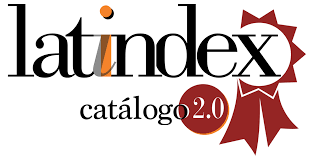Una aproximación histórica al dominio intelectual de las Relaciones Públicas. Tensiones paradigmáticas en su construcción disciplinar / A historical approach to the intellectual domain of public relations. Paradigmatic tensions in their disciplinary const
DOI:
https://doi.org/10.5783/revrrpp.v5i10.353Keywords:
Relaciones Públicas, dominio intelectual, paradigmas, teorías, historiaAbstract
El artículo se interesa por el desarrollo de las Relaciones Públicas en tanto campo intelectual, propiciando un acercamiento de índole paradigmática a las propuestas teóricas y conceptuales predominantes en los últimos 35 años. Con tal fin, se ha indagado en artículos de publicaciones científicas y en libros de editoriales reconocidas que hayan sido editados entre 1980 y lo que ha transcurrido de 2015, de modo tal de poner en evidencia las distintas visiones teóricas construidas en torno a la disciplina y establecer si es válido referir a la existencia de un paradigma dominante y enfoques alternativos
Downloads
References
BERGER, B. (2005). Power Over, Power With, and Power to Relations: Critical Reflections on Public Relations, the Dominant Coalition, and Activism. Journal of Public Relations Research, 17 (1), 5-28.
BOTAN, C. y HAZLETON., V. (ed.) (2006). Public relations theory II. New Jersey: Lawrence Erlbaum Associates.
BROWN, (2012) Epistemological modesty: Critical reflections on PR thought. Public Relations Inquiry, 1 (1), 89-105.
CASTORIADIS, C. (1993). La institución imaginaria de la sociedad. Barcelona: Tusquets.
COOMBS, W. T. y HOLLADAY, Sh. (2012a). Privileging an activist vs. a corporate view of public relations history in the U.S. Public Relations Review, 38, 347-353.
- (2012b). Fringe public relations: How activism moves critical pr toward the mainstream. Public Relations Review, 38, 880-887.
- (2014). It´s not just PR: Public relations in society (second edition). West Sussex: John Wiley & Sons.
DEMETRIOUS, K. (2006). Active voices. En L´ETANG, J. y PIECZKA, M. (ed.) (2006). Public relations. Critical debates and contemporary practice. London: Lawrence Erlbaum Associates.
DOZIER, D., GRUNIG, L. y GRUNIG, J. (1995). A manager’s guide to excellence in public relations and communications management. New Jersey: Lawrence Erlbaum Associates.
EDWARDS, L. (2011). Diversity in public relations. En EDWARDS, L. y HODGES, C. (2011). Public Relations, Society and Culture. Theoretical and Empirical Exploration. Abingdon: Routledge.
EDWARDS, L. (2012). Defining the 'object' of public relations research: A new starting point. Public Relations Inquiry, 1 (1), 7-30.
EDWARDS, L. y HODGES, C. (2011). Introduction: Implications of a (radical) socio-cultural ´turn´ in public relations scolarship. En EDWARDS, L. y HODGES, C. (2011). Public Relations, Society and Culture. Theoretical and Empirical Exploration. Abingdon: Routledge.
FERRARI, M. y FRANÇA, F. (2011). Relaciones públicas. Naturaleza, función y gestión en las organizaciones contemporáneas. Buenos Aires: La Crujía.
GRUNIG, J. (ed.) (1992). Excellence in public relations and communications management. New Jersey: Lawrence Erlbaum Associates.
- (2004). A função das relações públicas na administração e sua contribuição para a efetividade organizacional e societal. Comunicação e Sociedade, 39, 67-92.
GRUNIG, J. y HUNT, T. (2003). Dirección de relaciones públicas. Barcelona: Gestión 2000.
GRUNIG L.; GRUNIG, J.; y DOZIER, D. (2002). Excellent public relations and effective organizations: a study of communication management in three countries. New Jersey: Lawrence Erlbaum Associates.
HABERMAS, J. (1981). Historia y crítica de la opinión pública. La transformación estructural de la vida pública. Barcelona: Gustavo Gili.
HEATH, R. (2006). Onward into more fog: Thoughts on Public Relations´ Research Directions. Journal of Public Relations Research, 18 (2),93-114.
HEATH, R., TOTH, E. y WAYMER, D (ed.) (2009). Rhetorical and critical approaches to public relations II. New York: Routledge.
HODGES, C. (2011). Public relations in the postmodern city: An ethnographic account of PR occupational culture in Mexico city. En EDWARDS, L. y HODGES, C. (2011). Public Relations, Society and Culture. Theoretical and Empirical Exploration. Abingdon: Routledge.
HODGES, C. y DENEGRI-KNOTT, J. (2012). Transforming the city: The potential for urban ethnographies of PR. The case of Latin America. Public Relations Review, 38, 529-540.
HOLTZHAUSEN, D. (2002). Postmodern Values in Public Relations. Journal of Public Relations Research, 12 (1), 93-114.
- (2011). Public Relations as Activism. Postmodern approaches to Theory and Practice. New York: Routledge.
HOLTZHAUSEN, D. y VOTO, R. (2002). Resistance from the margins: the postmodern public relations practitioner as organizational activist. Journal of Public Relations Research, 14 (1), 57-84.
HORKHEIMER, M. (2003). Teoría crítica. Buenos Aires: Amorrurtu.
ILHEN, O. y VERHOEVEN, P. (2012). A public relations identity for the 2010s. Public Relations Inquiry, 1 (2), 159-176.
KARLSBERG, M. (1996). Remembering the public in Public Relations research: from theoretical to operational symmetry. Journal of Public Relations Research, 8 (4), 263-278.
KUHN, T. (1971). La estructura de las revoluciones científicas. México: Fondo de Cultura Económica.
KROHLING KUNSCH, M. (2011): Comunicação Organizacional e Relações Públicas: Perspectivas dos estudos Latino-Americanos. REVISTA INTERNACIONAL DE RELACIONES PÚBLICAS, N° 1, VOL. 1, 69-96.
L´ETANG, J. (2005). Critical public relations: Some reflections. Public Relations Review, 31, 521-526.
- (2009). Relaciones públicas. Conceptos, prácticas y crítica. Barcelona: UOC.
- (2011) Imagining public relations anthropology. En EDWARDS, L. y HODGES, C. (2011). Public Relations, Society and Culture. Theoretical and Empirical Exploration. Abingdon: Routledge.
L´ETANG, J. y PIECZKA, M. (ed.) (2006). Public relations. Critical debates and contemporary practice. London: Lawrence Erlbaum Associates.
MACNAMARA, J. (2010). Four gaps in public relations scholarship and practice: The need for new approaches. Australian New Zealand Communications Association Annual Conference, Canberra: Australia. En MCCALLUM, K. (ed.) (2010). Media Democracy and Change: Refereed Proceedings of the Australian and New Zealand Communications Association Annual Conference. Canberra: ANZCA, 1-18.
MCKIE, D. y MUNSHI, D. (2005). Tracking trends: Peripheral visions and public relations. Public Relations Review, 31, 453-457.
MCKIE, D. y XIFRA, J. (2014). Resourcing the next stages in PR history research: The case for historiography. Public Relations Review, 40, 669-675.
MICKEY, S. (2003). Deconstructing Public Relations: Public Relations Criticism. New Jersey: Lawrence Erlbaum Associates.
MOLONEY, K. (2006). Rethinking Public Relations. Abingdon: Routledge
MOTION, J. y WEAVER, K. (2005). A Discourse Perspective for Critical Public Relations Research: Life Sciences Network and the Battle for Truth. Journal of Public Relations Research, 17 (1), 49–67.
MURPHY, P. (2000). Symmetry, Contingency, Complexity: Accommodating Uncertainty in Public Relations Theory. Public Relations Review, 26 (4), 447-462.
PIECZKA, M. (2006). Public Relations expertise in practice. En L´ETANG, J. y PIECZKA, M. (ed.) (2006). Public relations. Critical debates and contemporary practice. London: Lawrence Erlbaum Associates.
PUCHAN, H. (2006). An intelectual history of German Public Relations. En L´ETANG, J. y PIECZKA, M. (ed.) (2006). Public relations. Critical debates and contemporary practice. London: Lawrence Erlbaum Associates.
SADI, G. (2010). La dependencia sistémica de las relaciones públicas. En AA. VV.: Relaciones Públicas. Reflexiones y desafíos, Santiago de Chile: Universidad del Pacífico.
- (2013). Algunos aportes del pensamiento crítico en Relaciones Públicas. Revista Dircom, 100, 23-28.
TOTH, E. (ed) (2007). The future of excellence in public relations and communication management: challenges for the next generation. New Jersey: Lawrence Erlbaum Associates.
WEAVER, C. K., MOTION, J. y ROPER, J. (2006). From propaganda to discourse (and back again): truth, power, the public interest, and public relations. En L´ETANG, J. y PIECZKA, M. (ed.) (2006). Public relations. Critical debates and contemporary practice. London: Lawrence Erlbaum Associates.
XIFRA, J. (2003): Teoría y estructura de las relaciones públicas, Madrid, McGraw-Hill.
- (2006a). ¿Es marketing todo lo que reluce? La pluralidad de perspectivas conceptuales de las relaciones públicas. Anàlisi, 34, 163-180.
- (2008). Las relaciones públicas. Barcelona: Editorial UOC.
- (2011). Manual de relaciones públicas e institucionales. Madrid: Tecnos.
ZANOTTI, G. (2005). Hacia una hermenéutica realista. Buenos Aires: Universidad Austral.
Downloads
Additional Files
Published
How to Cite
Issue
Section
License
Authors publishing in this journal agree to the following terms:
a. Authors retain copyright and grant the journal the right to be the first publication of the work as licensed under a Creative Commons Attribution License that allows others to share the work with an acknowledgement of authorship of the work and initial publication in this journal.
b. Authors may separately enter into additional arrangements for non-exclusive distribution of the version of the work published in the journal (e.g., placing it in an institutional repository or publishing it in a book), with an acknowledgement of initial publication in this journal.
c. Authors are allowed and encouraged to disseminate their work electronically (e.g. in institutional repositories or on their own website) before and during the submission process, as it can lead to productive exchanges, as well as earlier and higher citation of published work (see The Effect of Open Access).




